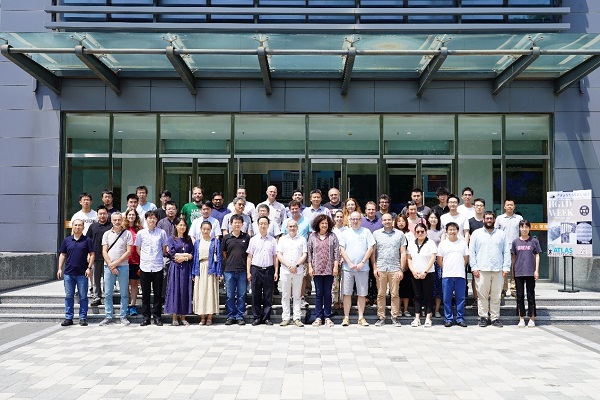High Granularity Timing Detector Workshop Held in Beijing
From July 8 to 13, the High Granularity Timing Detector (HGTD) Workshop, hosted by the Institute of High Energy Physics (IHEP) of the Chinese Academy of Sciences, was successfully held in Beijing. This workshop attracted 61 experts from various institutions, including CERN, IJCLAB in France, the Jozef Stefan Institute in Slovenia, Mainz University in Germany, IFAE in Spain, Radboud University Nijmegen in the Netherlands, the University of Science and Technology of China, Shandong University, Nanjing University, and other institutes including IHEP.
Prof. WANG Yifang, Director of IHEP, delivered a welcome speech and wished the workshop a great success. Project Leader Joao Guimaraes da Costa presented an overview of the HGTD project, highlighting its key achievements, organizational framework, and progress plan. He also emphasized the main topics of discussion for the workshop.
During the workshop, experts and scholars engaged in in-depth discussions on the development progress and technological breakthroughs of various subsystems and key components of HGTD. Topics included ultrafast sensor chips, ultrafast readout chips, peripheral readout electronics, large-area ultrafast module unit integration, mechanical structures, pipeline systems, and detector assembly. Participants shared their latest research findings and had lively discussions on several key issues and the future planning and development prospects of the HGTD detector.
A laboratory visit was also included of this workshop. On July 10, attendees visited the detector and electronics laboratories related to the HGTD project at IHEP. They also visited the 8-inch wafer production line for HGTD sensors at the Institute of Microelectronics, Chinese Academy of Sciences. On July 13, experts also visited the High Energy Photon Source (HEPS) campus in Huairou.
HGTD project is part of the High-Luminosity Phase II upgrade of the Large Hadron Collider (LHC). In the high-luminosity collision environment, the large number of pile-up events poses a significant challenge for data analysis. To address this, the ATLAS collaboration proposed a novel high granularity timing detector. The key to this detector's development is a new silicon sensor technology based on Low Gain Avalanche Detector (LGAD), which offers high time and spatial resolution along with strong radiation resistance. In recent years, LGAD technology has rapidly developed in the field of particle physics.
Based on LGAD technology, the HGTD detector achieves a time resolution of 30-50 picoseconds, more than 20 times better than traditional silicon-based detectors. This high-precision timing information significantly improves the ability to distinguish pile-up events, aiding in the precise measurement of key scientific issues such as the Higgs boson in the complex environment of high-luminosity collisions.
Members of the IHEP team hold several important positions in the HGTD project, including Project Leader, Schedule and Risk Manager, and leaders of various detector subsystems such as Sensors, Electronics, Modules and Detector units.
The High Granularity Timing Detector Workshop is held annually outside of CERN, and this year marks its first occurrence in China. The successful hosting of this conference not only sorted out the latest progress of the project but also formulated the future work plan, laying a solid foundation for the smooth advancement of the project and the deepening of international cooperation.

Contact Information
Ms. JIA Yinghua
jiayh@ihep.ac.cn